Free digital copy
Get Speciality Food magazine delivered to your inbox FREE
Get your free copy
Charcuterie and grazing boards are the ultimate lazy supper. When guests are on their way over and time is tight, you just can’t beat the visual feast of a platter of carefully arranged sliced salamis and cured meats, dressed up to the nines with a tumble of colourful accompaniments. All that’s needed on the side is a chilled bottle of wine, and you’re ready to go.
Join us as we go on a culinary charcuterie journey, learning more about its origins, how to serve it, and the essential products retailers (and foodies) need to know.
This is a tough question. Curing and preserving food is a tale as old as time. For as long as humans have been able to scavenge and hunt, we’ve been looking for ways to keep our prized catches in tip top condition. Charcuterie, as we know it now, was a much simpler affair in early civilisation. Hunger-gatherers weren’t concerned about the taste, spicing or provenance of their meat cuts. Their primary remit was survival, and that meant being resourceful, coming up with ways to stop food spoiling, which could have been fatal.
There’s evidence of the Egyptians curing meat. Vikings cured and salted fish. And in Asian culture fermenting and pickling has been a part of life for Millennia.
While the exact date of the first forms of cured meat will never be known, it is recorded that the Mesopotamians (around 3000 BC), dried, salted and stored their grub in sesame oil when sustenance was scarce.
Around 850BC, the Ancient Greeks were smoking, drying and salting – recognising that the latter drew moisture from meat, limiting bacteria.
And by 200BC salt curing was common across Europe.
The word ‘charcuterie’, is thought to have been coined in 15th Century France – a kind of portmanteau of the words ‘chair’ (meaning flesh) and ‘cuit’ (cooked).
Charcuterie relates to the preservation of meat – which takes many forms. It includes salamis and cured whole muscle cuts (such as hams), but also prepared meat products. In France they’re especially adept at producing these…mousses, pates, rillettes, terrines, and wicked-good layered, filled croutes, sliced to go at the counter of the local traiteur or butcher.
Do you know your DOP from your AOP? Food labelling can be a bit of a quagmire for the uninitiated. It’s important to note, says Stefano Cuomo, CEO of Macknade Food Hall, that some of the designations relate to the way products are made, not how good they will taste. It’s down to deli counter staff to impart their knowledge to customers, explaining the differences. “It’s all about trust,” Stefano says. “What’s most important when selling premium products is helping consumers to understand that PDOs and PGIs are not necessarily about taste and quality, they’re a guarantee of production method, so you know what you’re getting each time. I do think PGI has a historical value to it. It captures the joy of the way something’s been made. But, for me, the most important thing is selling products you love. If you can get something that’s non PGI, but you know the producer, appreciate the process they’re using, and think the end product tastes great, go for it!”
DOP/PDO/AOP – Used across Europe, each of these terms protects regionally produced foods, which are regulated to ensure they’re made within the geographical regions (terroirs) that retain their unique characteristics; meet high quality standards; use ingredients from approved locations; and are tested, tracked and approved.
IGP/PGI - Protected Geography Indication is similar to PDO or DOP, ensuring only products from a specified area can carry that region’s name. The criteria, though, is a little more relaxed. While the products must be produced in a certain geography, their characteristics aren’t as strictly defined.
Label Rouge – In France the Label Rouge denotes supreme quality, and precisely defined characteristics, with requirements throughout sourcing, manufacturing and even labelling.
Stefano says there are two sides to sourcing and stocking a deli counter – emotive, and pragmatic. While it’s easy to find yourself swept up in the romance of the stories and people behind the products, you absolutely must assess exactly what your customers want and, vitally, what will sell. “In an ideal world, perfection is slicing at the counter to order,” he explains. “The reality, for anyone setting up a new shop, is self-serve is huge. It’s important. People want easy solutions, and pre-packed charcuterie solves a problem for them. Beyond this, in your counter work out what your priorities are. Packaging? Flavour or taste profile? Origin? Then it’s a balance between price points.”
You have to recognise, Stefano adds, that although your dream might be to line up a selection of British charcuterie, it doesn’t always meet the price point the average deli shopper demands. You need your recognised, big cutting salamis (Napoli and Milano are two of the most popular). And speak to British producers about their cutting sized options. “The per kilo price is less of a problem when you’re talking about quantities of 30g or 50g,” Stefano explains, adding that he encourages British charcuterie brands to invest in larger gauge salamis, exactly for this reason.
“I also think you need to think about how the counter looks from the customer’s point of view. Offer a range of coarseness and flavour profiles. Alongside the core basics, with simple seasoning, add value rotating special varieties, whether that’s mushroom or fennel, or whatever is interesting. Then go into the regionalities. The fennel salamis of Tuscany and central Italy, chilli varieties from Southern Italy, truffle from Northern Italy. Venison salamis from Scotland, through to others being made with different salts in regionals areas. Provenance is a great narrative.”
Continental favourites, like the already mentioned Milano salami, will always have a place. They are, after all, front and centre in supermarkets, so already ingrained into consumers’ minds. Stefano says he thinks there is a market to expand on the number of terrines on the counter. “The big, Northern European styles, they’re great,” he says, adding, “We’ve also seen an interest in German charcuterie. That’s always gone a little under the radar. I want to get over to Germany to dig more into the artisan scene there, I think there’s scope for it.”
He is seeing a rise in interest in British charcuterie too. “It’s just getting better and better.”
Tempting customers at the counter, and teasing their tastebuds into a sale, is only part of their journey. It should continue when they get home, Stefano says. To start, make sure your display looks enticing, and that you ‘face up’ charcuterie each day in the same way you’d prepare cheese – to show it off at its best.
And when you’re cutting, ensure you do a neat job, taking off any non-edible rind or casing, and carefully layering every piece so they don’t stick together. “Customers need to be able to present what they’ve bought nicely at home. If they’ve picked something up on a Friday night to share with friends after work and it’s all stuck together, it’s not a good look,” Stefano says, saying taking extra care and pride at this stage is of paramount importance.
There’s a delicate balance to be struck when pairing up charcuterie. You’ll want to let each slice do the talking, allowing its full flavour to shine through. With rillettes and pates (much like fatty, creamy cheeses) it’s all about acidity. Crisp white wines, sparkling English wine, Champagne, Cremant and Cava will all do the trick.
Cava is an equally good match (as are Prosecco and Asti) alongside cured hams such as Serrano, Iberico or Parma, while more herbal varieties such as Speck are heavenly with Riesling.
Put Salamis with a Pinot Noir, or even a sweet, ripe Amarone or Primitivo, which go hand-in-hand with Southern Italy’s spicier sausages.
As for edible accompaniments, keep it simple. Sweetness is a must to balance out the salt. Honey (especially truffle honey) works well, as do most dried fruits, or slices of fresh melon, fig, apple and pear. Add walnuts or almonds to bring out charcuterie’s nutty notes too.
1. Lomo – Also known as Lomo de Cerdo (pork tenderloin) or Lomo Iberico (if it meets the criteria). This is a delicate, lean cured meat, appealing to those who prefer a higher protein, lower fat cut. It’s taken from the muscle of the pig which runs alongside the backbone, and is typically cured with spices including paprika, which give a light dusting on the outside. Lomo has a sweetly spiced, umami flavour, and supple texture.
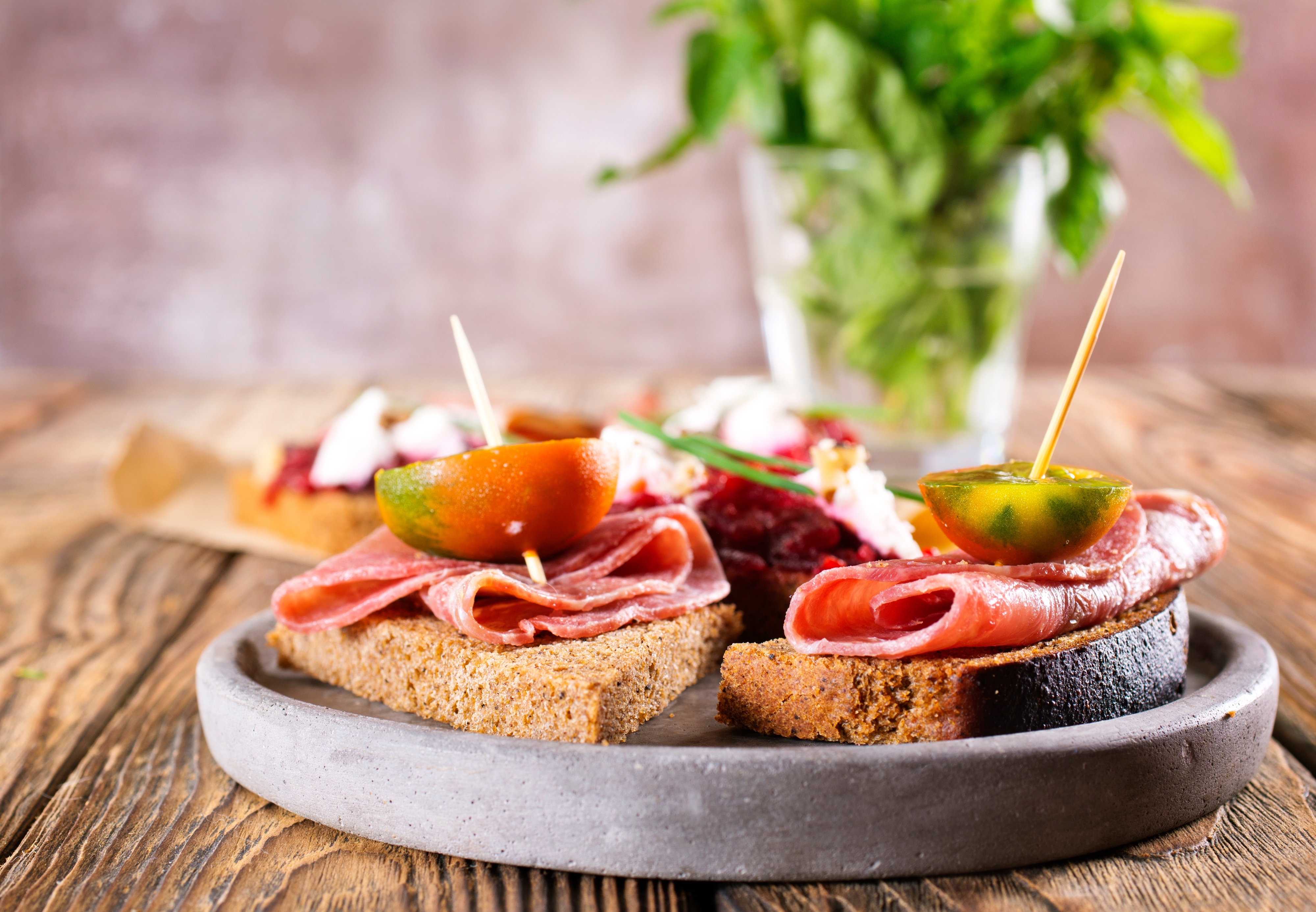
2. Serrano ham – A raw ham originating in Andalusia,and dry-cured for at least nine months, but typically 12 to 18 months. It’s made with cuts from the Duroc pig, renowned for its excellent charcuterie-making properties. A sweet, savoury, dense ham with a striking, deep pink colour.
3. Salchichon – Spain’s ubiquitous salami, available in a range of different flavours and qualities. Some are crafted with Iberico pork.
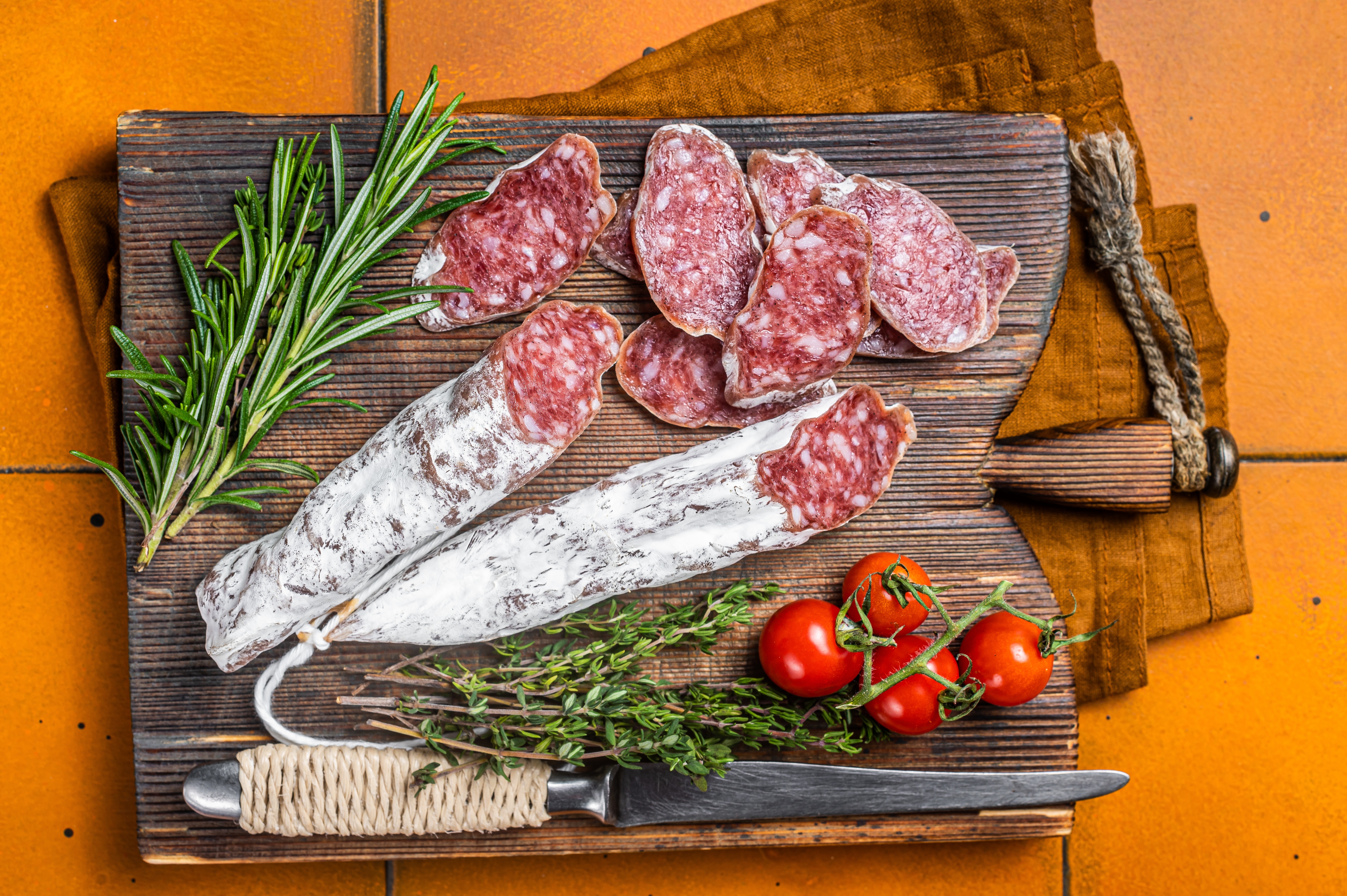
4. Fuet – At its heart Fuet (the Catalan name for a whip) is a very simple dry-cured sausage with a delicate moulded rind. It’s made with high-quality pork, finely ground, and combined with salt and pepper, letting the meat speak for itself. Fuet has a lightly salty, sweet, tangy taste with a touch of spice. It’s an essential part of the Catalan traditional of ‘vermut’, enjoying little bites alongside fortified wine.
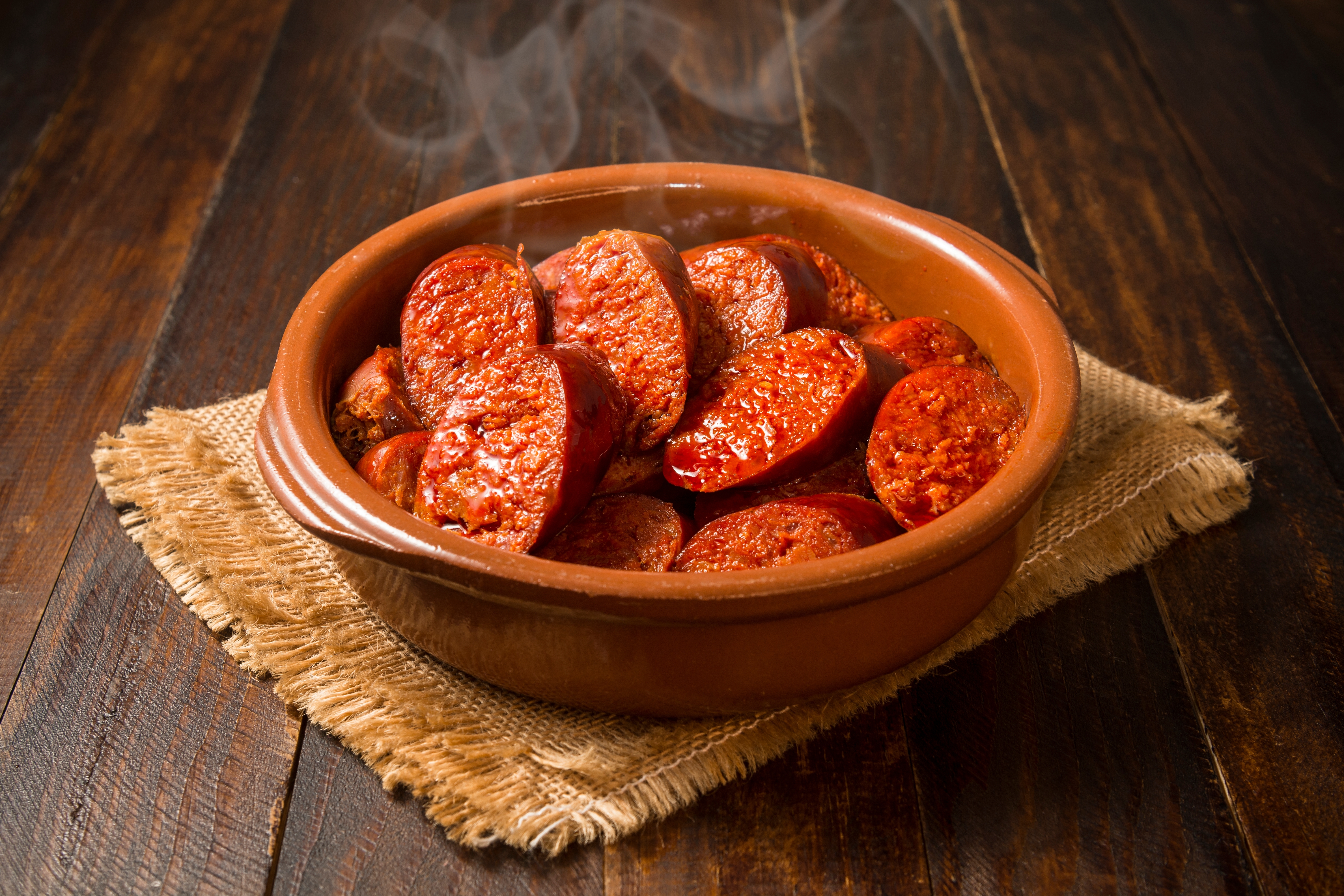
5. Chorizo – Ubiquitous across the country, chorizo is one of Spain’s most recognised exports. As such, there is the good (deeply rich in colour, and made with Iberico pork) and the bad (bright orange/pink and filled with preservatives). Choosing a high quality, respected maker from a trusted supplier will place the good stuff in your hands. Chorizo making dates back to the 16th Century, when spices such as paprika (integral to the sausage, alongside salt and garlic) began to trickle in from the New World.
Typically, chorizo is made with 70% lean pork to 30% fat and is available cured and dried (curado) or fresh (fresco) - a tender variety, tucked into cooking to impart a sweet, smoky flavour. There’s also Chorizo de Pamplona from Spain’s Navarre region, prepared with a finer mince, and with a milder flavour. Several types of premium chorizo are made without nitrates.
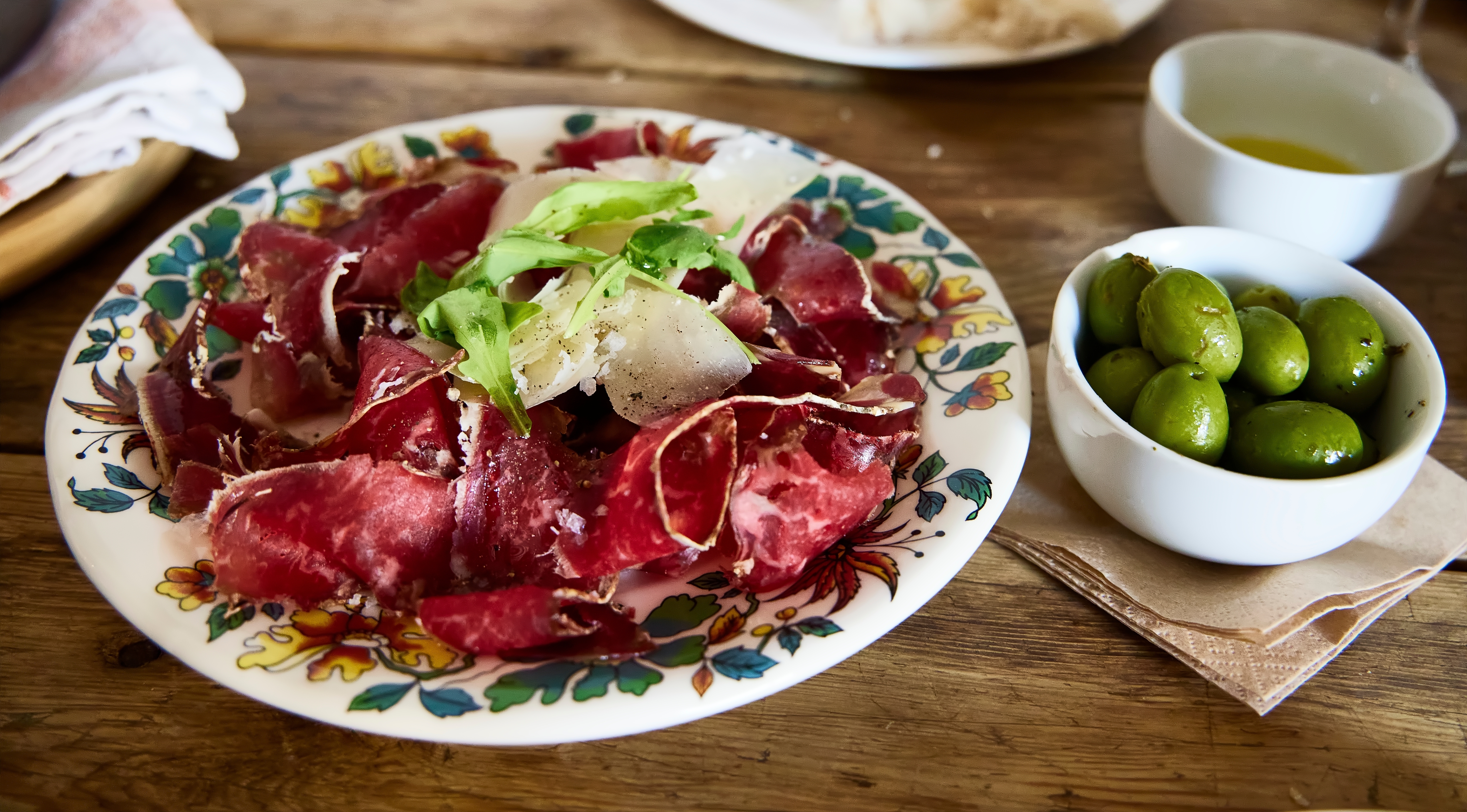
6. Cecina – A much-loved dried beef product from Castile and Leon made in much the same way for generations. Similar in style to a beef jerky, but with a more tender finish, it’s produced with prime cuts (such as rump and topside) of cattle which are at least five years old. The beef i salted, smoked over oak for a long period, air-dried and cured for up to 22 months. Cecina is also made with other meats such as ox and goat.
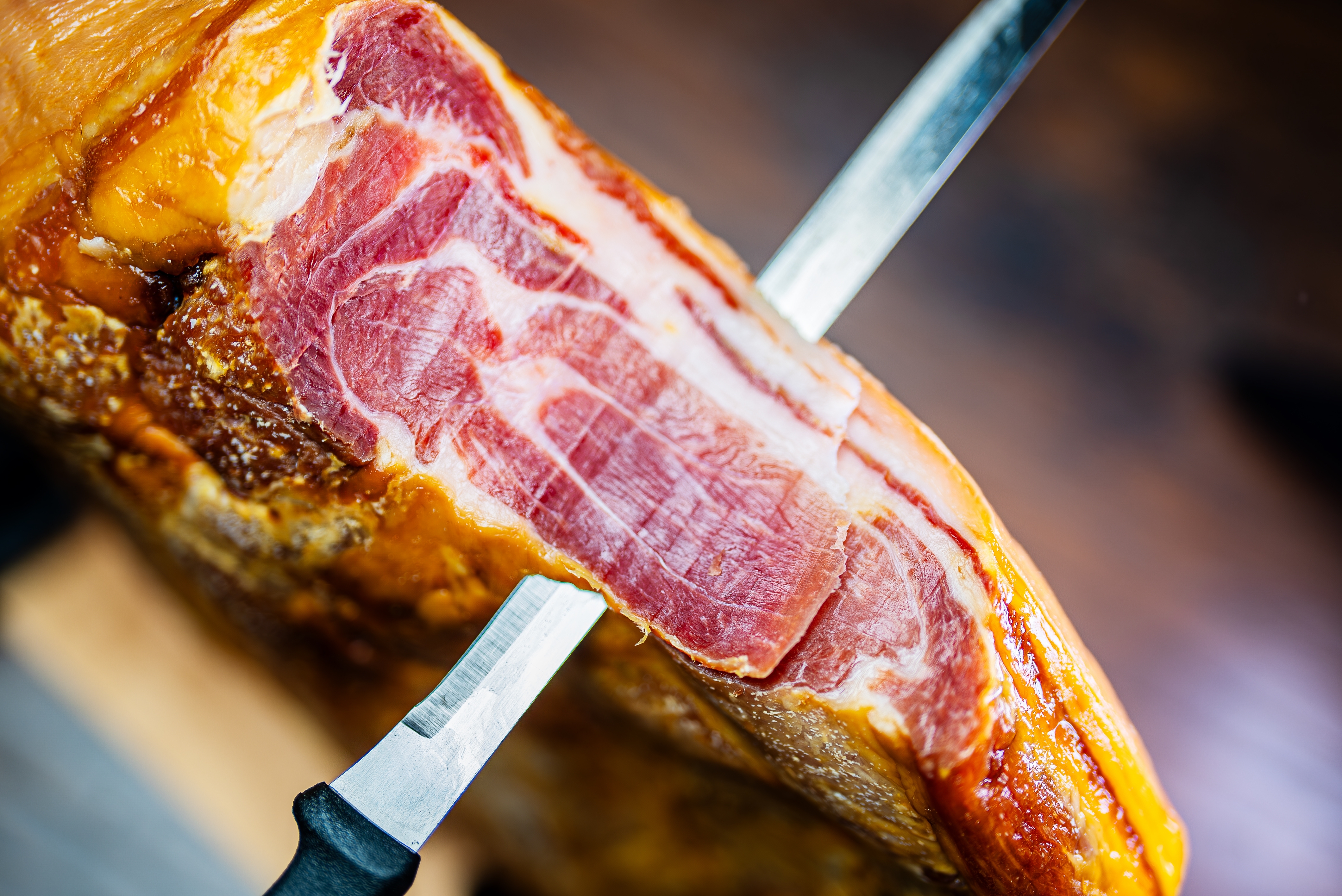
7. Jamon Iberico – Iberico ham is the pride of Spain, crafted traditionally using the meat of the Iberian pig – a wild species native to the Iberian Peninsula. Production is heavily regulated, but still there are imposters on the market, so it pays to know your stuff. The very very best is Black (Pata Negra) which denotes the pork is 100% Iberian, acorn-fed pig. There’s no greater joy than a sliver of magenta-pink Pata Negra, served at room temperature. Red Jamon Iberico pork must be at least 50% Iberian breed (usually 100% pure bred mother and 50% father) and is also acorn fed. Green, or Cebo de Campo, is at least 50% Iberian pig, fed on a mixture of pasture and acorns. And White is at least 50% Iberian pig, fed on a more commercial diet.
It’s worth splashing out on Black and Red varieties to experience the exquisite flavours revealed by the pigs’ acorn-rich diet.
8. Coppa – Taken from the collar of the pig, this lightly marbled whole muscle cut has an excellent ratio of fat to meat, and is dry-cured and matured with any number of aromatics, usually including warm herbs and spices such as juniper, bay, nutmeg and fennel.
9. Finocchiona salami – A deli counter favourite, this Tuscan speciality’s story stretches back centuries, when black peppercorns were scarce and expensive, forcing people to turn to fennel to give bite to their salamis. The mid-sized cutting salami has soft texture and highly aromatic, anise taste from the fennel seeds.
10. Milano salami – From the Lombardy region, south of Milan. This is minced to a medium to fine density, and has a sweet, mild flavour. The almost equal ratio of fat to meat gives Milano salami a silky mouthfeel. It should be sliced thinly to appreciate its nutty taste.

11. Prosciutto di San Daniele PDO – As the PDO dictates, San Daniele ham is made to strict rules and with only Italian pork, salt, air and time, in the municipality of San Daniele del Friuli whose microclimate contributes to the special taste and texture of the finished product. It’s a sweet, melting, remarkable ham.
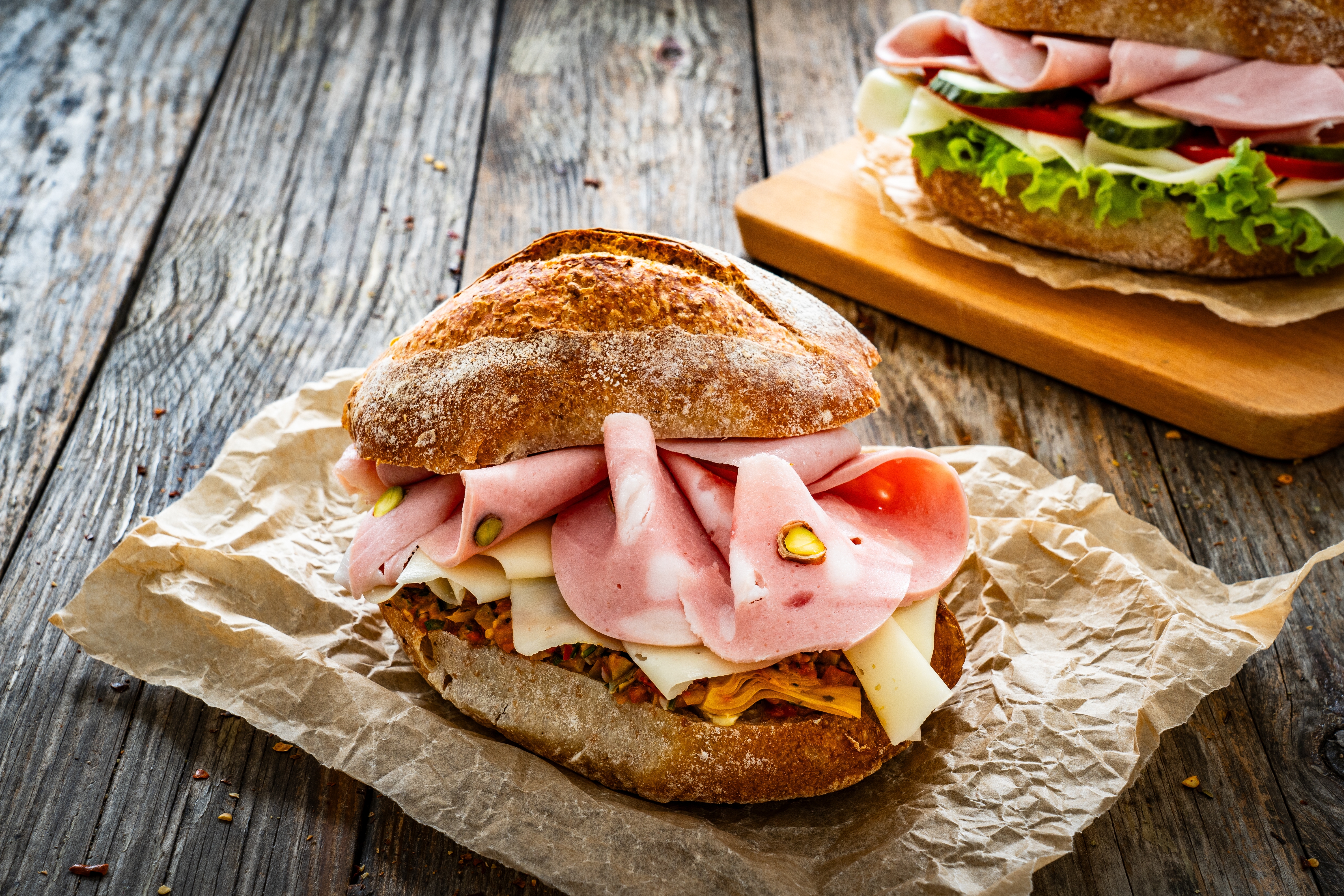
12. Mortadella di Bologna IGP – A consortium has protected the making of IGP Mortadella since the late 1600s, and it was officially recognised by Cardinal Farnese in 1661, with a proclamation around its production. Typically Mortadella is crafted with shoulder meat, combined with lard and distinctive spices, cooked in special stoves for hours. Similar to the large format sliced sausages popular in Germany, Mortadella is incredibly soft, almost melt-in-the-mouth. It’s available in its natural form, but there are also varieties studded with pistachio nuts for an even more indulgent experience.
13. Prosciutto di Parma DOP – The Consorzio del Prosciutto di Parma was set up in 1963 to protect the making of this incredible ham. Making it is a complex process. Salting the hind legs of the pig, curing, washing, brushing and drying before only the best are fire branded with the Ducal Crown. It’s a soft, sweet, moreish product, perfect for draping over crisp Italian bread with a drizzle of oil. Curations range from around 16 to 30 months.
14. Genoa salami – Typical to Italy’s Genoa region, this salami is made with a medium grind of meat, heavily scented with garlic. It’s a nice one to explore if you’re already a fan of Milano and Napoli salami.
15. Soppressata – From Calabria, the heel of Italy, but with variations available around the country. Soppressata is made with shoulder meat and other leaner cuts, and has a coarse to medium texture, with an uneven, generous speckling of fat. In its home region it will be flavoured with dried chillies, salt, peppercorns and red wine, which gives it an almost purplish tinge. You’ll find it in pressed (elongated) and round formats.
16. Nduja – This has become an important part of the modern Italian food story, growing massively in popularity across the UK, where it’s appearing in delis and food halls, and on the menus of both country pubs and Michelin starred restaurants. Pronounced ‘en-doo-ya’, nduja is a kind of spicy, spreadable sausage from Calabria, made with a hefty dose of pork fat to meat, salt, and around 30% local chillies. It has a hot, warm, tangy fermented flavour. Brilliant melted into stews, over pizza, in cheese toasties, marinades and so much more.
17. Salsiccia Secca – A premium dry-cured salami, available piccante (with chilli, fennel, pepper and garlic) or dolce (without chilli and often infused with wine). It’s cured for many weeks to develop its flavour.

18. Bresaola – Salted, air-dried beef from Italy’s Piedmont and Lombardy regions, typically cut from the tip of the haunch. The very best is Bresaola della Valtellina IGP from Lombardy’s Alpine regions, made only with cattle fed on a natural mountain diet, and matured in specially air-conditioned rooms for up to eight weeks. Bresaola makers cure the beef in a mixture of salt and additional aromatics such as juniper and cinnamon. The result is highly flavoured, and soft, with a lightly chewy texture.
19. Napoli salami – Another deli counter favourite from the Campania region. It’s made with pork shoulder, loin and neck, infused with black pepper and spices, with a drying period that varies according to size, from 30 days onwards. It’s a touch warmer in taste than Milano salami.
20. Porchetta – There are a couple of ways to enjoy porchetta. Warm, cut in thick slabs, from the deli counter inside a crisp focaccia or ciabatta, or thinly sliced as part of a charcuterie spread. Porchetta is typical around Italy’s Lazio, Abruzzo and Umbrian regions, composed by seasoning and rolling loin and belly cuts with a liberal dose of salt, rosemary, garlic and fennel, which imparts and irresistible flavour throughout the meat.
21. Ventricina salami – Made usually in Abruzzo, Moliso and Lazio, Ventricina is coarsely minced, mixed with chilli and spices, and hung on rods before drying for up to 60 days, and maturing for around seven months. The recipe varies from maker to maker, and can include anise, fennel and pepper. This is a salami with bite.
22. Spianata Calabrese Piccante – This one’s notable for its wide, flatish shape, a result of pressing and maturing the salami between wooden boards. It’s highly flavoured with pepper and chilli as is typical across Calabria.
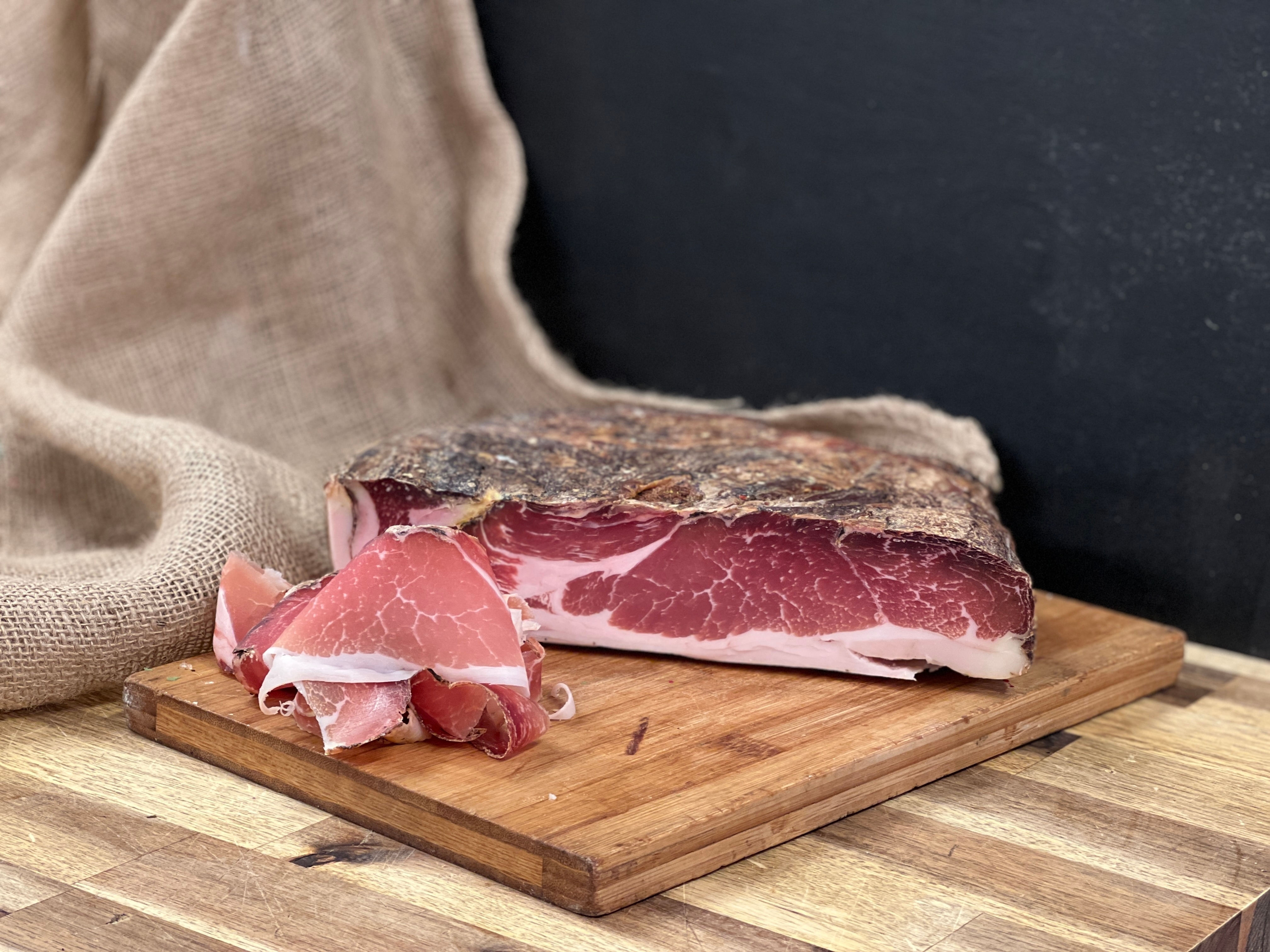
23. Speck Alto Adige IGP – From the Southern Tyrol, this incredible ham is inspired strongly by German and Austrian curing traditions, with only around 30 recognised producers, working to strict rules to ensure authenticity. Within the IGP Speck can only be made with pork leg, may not contain more than 5% salt, is marinated and turned over several weeks, smoked outside (to add a frisson of mountain air) and aged around five months. The spice/herb mixture used differs, but usually includes bay and juniper. Speck has a beautiful red/pink colour and brings an enormous amount of flavour to the charcuterie board, or cooking.
24. Sopressa Vicentina DOP – Only a few producers carry the DOP for this sausage, originating from the Veneto area. It must be made with pigs from the Large White, Duroc or Landrace breeds, using the finest prime cuts. It’s seasoned with salt, pepper and additional flavourings such as garlic and rosemary.
25. Salame Gentile – The ‘kind’ salami. It’s made only with the very best cuts of neck, Culatello and pancetta, seasoned with red wine, garlic, salt and pepper, and aged in natural casings for around a month or more to develop a deep colour profile.
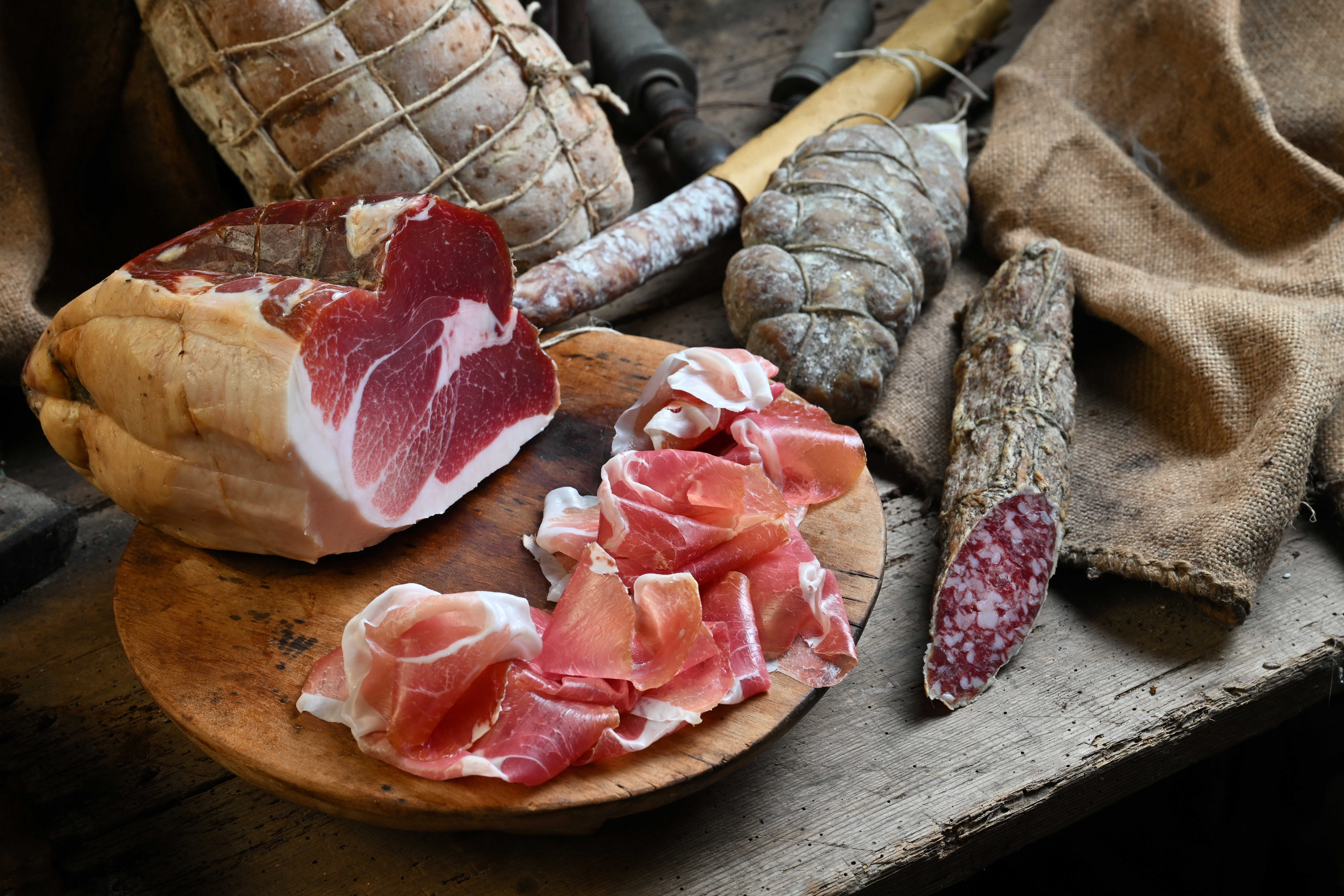
26. Culatello di Zibello PDO – This is a rare, highly prized whole cut charcuterie, designated for PDO status in 1996, but made since the Middle Ages. Only meat from the haunches of pigs born, raised and butchered in Lombardy and Emilia-Romagna makes the cut. They’re seasoned heavily with salt, garlic and black pepper, hung to cure for at least 12 months.
27. Pancetta Coppata – An attractive cut from Emilia-Romagna, Lombardy and Veneto that combines both coppa and pancetta. It’s glorious cut thinly and draped over warm crusty bread.
28. Salame Piemonte PGI – This is a raw, cured, seasoned salami, filled with the flavour of garlic, and soft spices. It must also include red wine from Nebbiolo, Barbera or Dolcetto.
29. Lardo – British consumers (especially those who like to frequent high-end Italian restaurants) are getting on board with this delicacy. Lardo is cured pig back fat – which doesn’t sound very appealing does it? But it’s absolutely gorgeous. Buttery, silky, aromatic with herbs, lightly salty. It’s a very modern addition to the charcuterie board, sinking into bread effortlessly, imparting a beautifully unforgettable flavour.
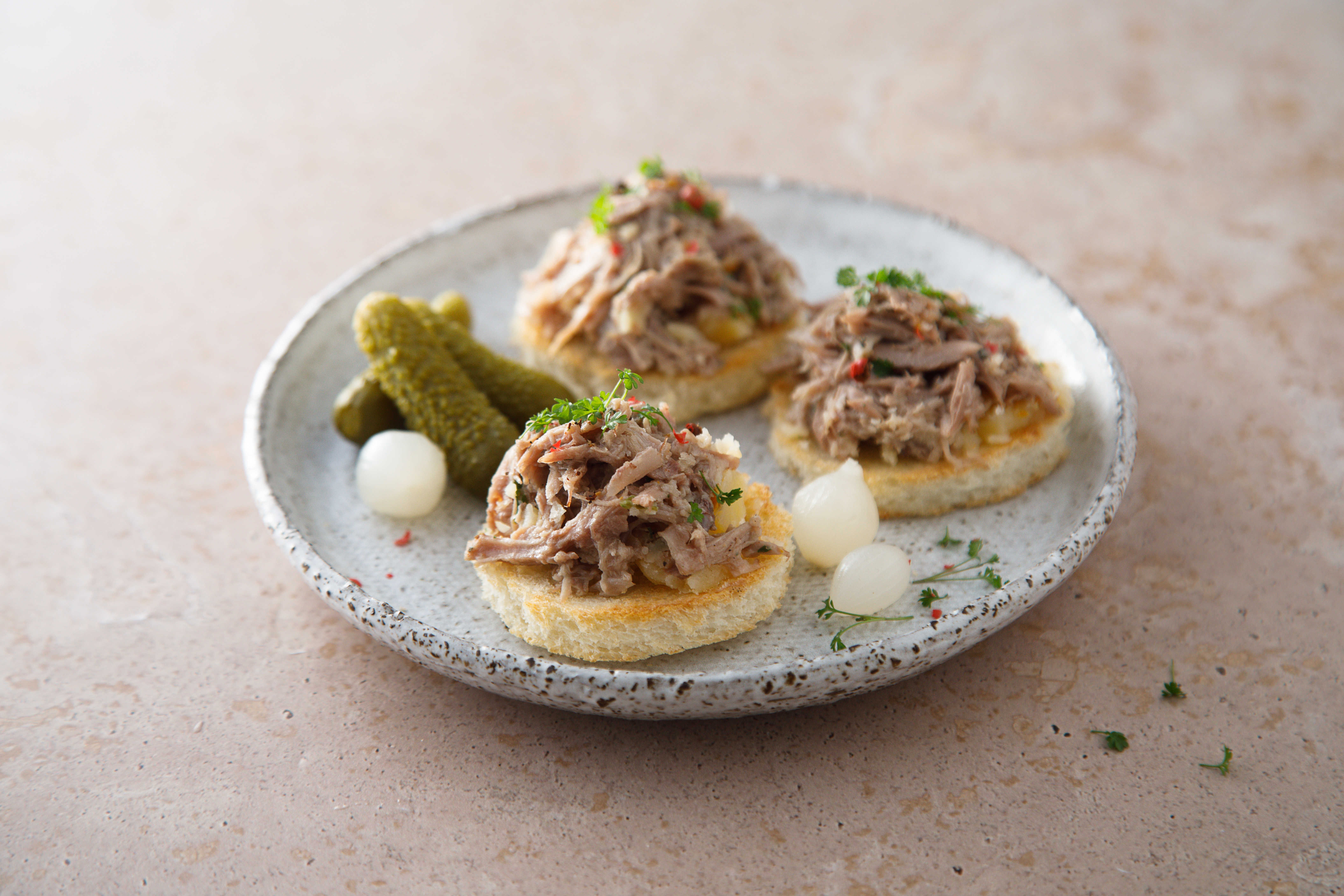
30. Rillettes – A French staple, but increasingly being crafted by small producers in the UK. To make rillettes, meat (often duck, goose or pork) is cooked slowly with spices and herbs, seasoned, shredded finely, and preserved in its own fat and juices. Unctuous and moreish.
31. Fromage de tete – Not for everyone – certainly for the more adventurous Brit. This is made by cooking down a whole pig’s head, removing the meat (there’s some very good stuff to be taken from the jowls), compacting it with its own juices and seasoning into a sliceable terrine.
32. Pate de Campagne – France’s country pate, readily available everywhere to smear on baguette. It’s made primarily with pork meat and liver, some fat, maybe a little cooked ham. Other flourishes (a bit of wine or brandy, slivered nuts, plump jewels of dried fruit) might also be added depending on the maker.
33. Jambon Luxeuil – From the Franche-Comte area, made only using meat from pigs labelled as ‘Porcs de Haute-Saone’ or ‘Porcs de Franche-Comte’. The ham is hand rubbed with a salt mixture, flavoured with Arbois AOC or IGP red wine, juniper, spices and herbs, and cured for a minimum of nine months.
34. Saucisson Sec – A classic dried sausage, produced from lean cuts such as leg, mixed with belly, and finished with salt, sugar, spices and sometimes garlic. As the sausage ferments, it gathers an attractive, natural white mould rind. Recipes for saucisson sec date back thousands of years, and each region has its own take – some studded with figs, walnuts, or even cheese. The pebbling of fat against lean meat gives the product a dense chew, but creamy texture. Saucisson sec d’Auvergne PGI has protected status, being made with Haute-Loire pork.
35. Rosette de Lyon – One of the biggest cutting sausages, often up to 40ins in size. Rosette de Lyon blends pork with sea salt, peppercorns and garlic, and is cured for around a month, resulting in a sweet, mellow taste.
36. Jambon de Vendee IGP – A lengthy process ensures the quality and unmistakable flavour of this ham. Leg meat is de-boned by hand, rubbed with salt, and flavoured with aromatics and Brandy before being wrapped and pressed. It has a fruity, spicy taste, often married in the Vendee with local white beans called Mogettes.
37. Jambon de Bayonne PGI – Made in the South-West France’s Adour basin, where the alternating mild and humid climate produces just the right conditions. There’s no rush making this ham. It’s salted by hand in winter, hung to rest, coated in rice flour and pork fat, and matured into summer, before being sealed with the Basque cross (Lauburu) and sold at around nine to 12 months.
38. Jambon de Savoie – A sweet, almost herbal ham, cut from the leg, rubbed with salt by hand, and rested for 10 to 12 weeks, reducing its moisture by 30% before maturing for six to 12 months. Some varieties will be smoked over beech wood.
39. Jambon de Vendee IGP – Heralded as one of the loveliest French hams. This is rubbed with sea salt from the famed Isle de Noirmoutier off the Atlantic Coast, alongside flavourings including cinnamon, bay, thyme and a touch of alcohol. It’s pressed and dried for up to four months, gaining a wonderful sweetly herbal taste.
40. Jambon du Morvan – Hailing from the Bougogne-Franche-Comte region, this ham has been made since Gallo-Roman times, when it was purely crafted using wild pigs foraged on acorns. Today, the pigs used are fed on local products such as wheat and barley, and the ham salted for four weeks before being hung for a minimum of six months. Its modern revival is the work of a special Morvan ham association, which hopes to gain IGP status for the delicacy.
41. Jambon Kintoa PDO – An air-dried ham, made using the meat of the Pie Noir Basque pig fed on chestnuts, grass and acorns in the Aldudes Valley, which contribute to its exceptionally striking colour. Each ham is air dried and matured for a minimum of 24 months, giving it a punchy, fruity taste.
42. Montbeliard Sausage PGI – This famous French sausage has been made since the 14th Century, and since 1977 the Confrerie des Compagnons du Boitchu has been promoting the genuine article, which carries the Boitchu seal. A true Montbeliard product is a mixture of lean meat and fat from local pork, seasoned with garlic and caraway, and dried over a long period of time in a chimney, surrounded by softwood smoke, leading to a sweetly aromatic, smoky flavour.
43. Morteau sausage/Saucisse de Morteau IGP – The making of this smoky sausage from Franche-Comte dates back to the 16th Century. To this day, it’s cold smoked in tuyes (historic pyramidal chimneys) over pine and juniper wood and is eaten thickly cut, hot or cold.
A sign of excellence in Morteau is the dual markers of both IGP and Label Rouge. Label Rouge dictates exceptional quality, with strict regulations around what the pigs are fed, their welfare, and the production of the sausages – which can only be seasoned with salt and pepper, and must be smoked for a minimum of 48 hours.
44. Tavaillon – Something a bit different for the charcuterie board. The name of this cured beef product is a nod to the traditional tavaillon tiles found on houses in the Jura region. Sliced from dark, deeply coloured slabs, Tavaillon has a texture and appearance similar to a soft jerky. It’s made with Savoie beef marinated in plum brandy and cured with Guerande salt. The taste is salty, a touch spicy, and with a defined fruitiness. Perfect alongside a raclette.
Freezing any food can affect its integrity, and this is no different for charcuterie. Already sliced products that are particularly fragile (such as Parma ham) don’t fare very well and should only be frozen if they’re to be used in cooking later on. Larger, uncut hams and salamis freeze better. Ensure you wrap everything very tightly to prevent freezer burn, and let items defrost slowly overnight in the fridge before use. Aim to use any frozen charcuterie within two months.
Can you get charcuterie without nitrates?
A number of charcuterie products are naturally free from nitrates, including Prosciutto di Parma and 100% Iberico ham. Salamis tend to contain preservatives to ward off harmful bacteria such as botulism, and these are especially prevalent in products from large brands that need to put out a lot of product quickly. For nitrate-free salamis, seek out smaller, artisan brands which may dedicate more time to the natural, slow drying process, eschewing the need for additives.
In the UK Trealy Farm and Peelham Farm both offer nitrate-free products, and Brindisa sells a nitrate-free chorizo.
Follow here for charcuterie board ideas.